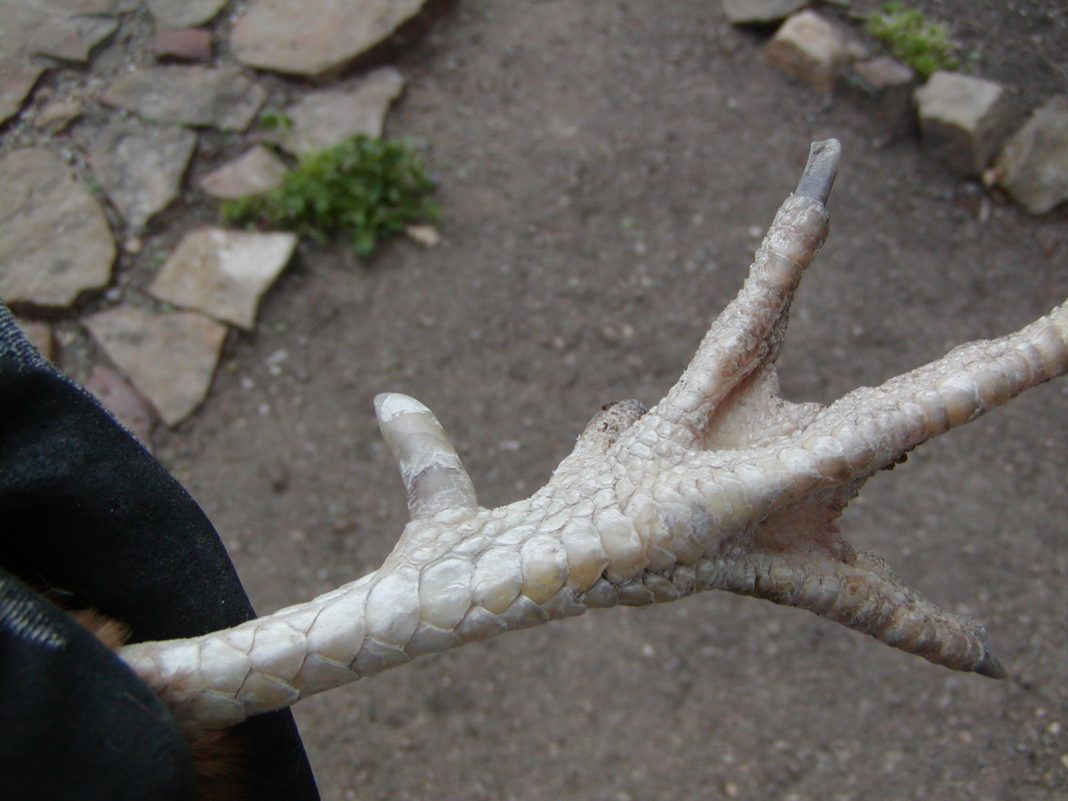As a Cockerel matures, its spurs become big and keratinous layer grows, creating the spur’s characteristic point. The spur is a pointed, rigid growth on the inner leg of a Cockerel and a hen. The hen’s spur only amounts to a small hard nubbin just under the skin. But the Cockerel’s spur grows much longer than the hen’s. It has an inner layer the “quick” which supplies blood flow and an outer layer which is hard like a finger nail. Cockerel spurs are self-defense tools for birds, but they can become dangerous to hens or to cockerel s themselves
Left untrimmed, cockerel spurs can reach lengths that could become harmful to hens and causing damage to a its own legs. Many flock keepers trim cockerel spurs to prevent unintentional injury. Permanent spur removal is possible but, as bone is involved, surgery is involved and it can be costly.Fortunately, there are three ways to remove spurs at home yourself.
1. Filing
Like human fingernails, the outer sheath of Cockerel spurs consists of keratin. Using a metal file you can grind the spur down to a more manageable length. Immobilize your cockerel by securely wrapping it in a blanket or towel, leaving one leg exposed. Taking firm hold of the shank, use your chosen tool to file down and shape the spur. Make sure to stop well before reaching the bone to avoid causing pain and injury to your bird. You might need someone to help keep your bird secured or distracted while you file down the spur.
2. Clipping
Just like your nails, cockerel spurs can be trimmed via clipping. However, be sure to select a set of clippers large enough to fit around the spur; the sharper the clippers, the more quickly the procedure will go. With one hand firmly holding the shank steady, clip the top of the spur away. Make certain you do not clip all the way down, as you will cut into bone. A metal file can then be used to round and smooth down the clipped edges of the spurs.
3. Sheath Removal
Detaching the outer sheath of a cockerel spur involves less risk than filing or clipping, as no sharp tools are involved. Instead, use pliers and two medium-sized potatoes. Heat a potato in for about 10 minutes until it’s fully cooked. Carefully insert a spur into the potato, making sure that it does not touch any other parts as this can cause a painful burn. Leave the potato on for two to three minutes. The heat and moisture from the potato act to soften the keratinous sheath that overlays the bone. Remove the potato, then immediately grasp the spur with the pliers, give it a good twist, and pull. The sheath should pop right off. If not, apply the potato for two more minutes and try again. Repeat this on the other spur with the second potato.
Although most farmers would prefer to leave the cockerels armed and capable of defending their flocks, at some point you will have to go with preventing them from hurting themselves.

